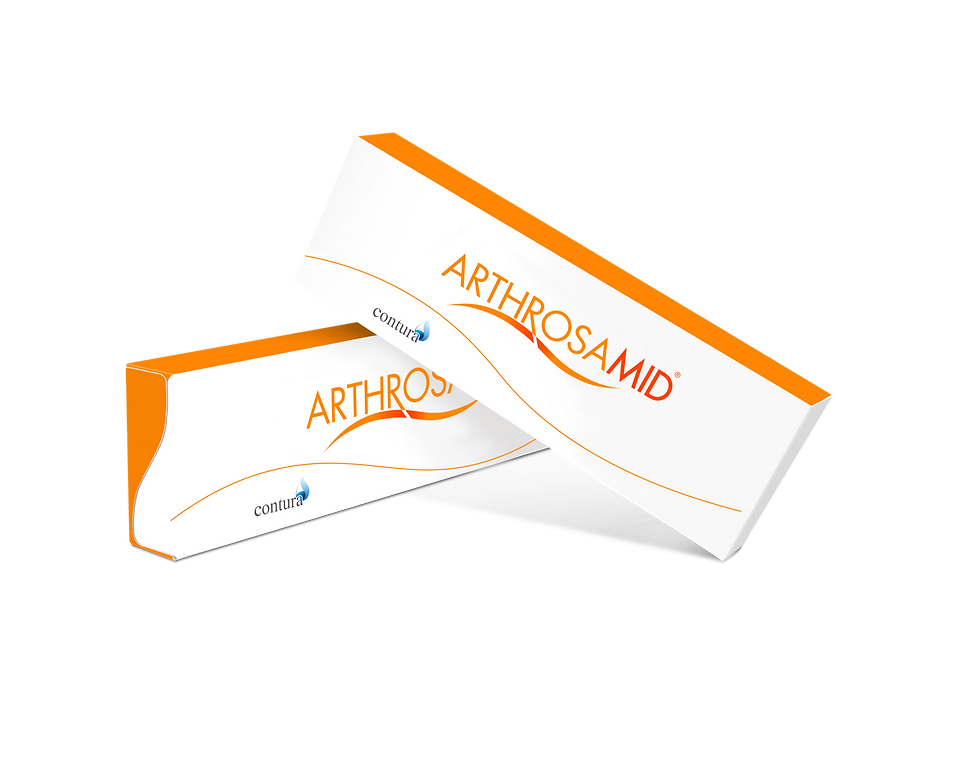The Latest Regenerative Medicine Treatments That Are Changing the Game in Knee Osteoarthritis
- botchey
- Mar 28
- 3 min read
By Dr. Sam Botchey, Consultant in Sports and Exercise Medicine

Knee osteoarthritis (OA) is one of the most common musculoskeletal conditions — not only in older adults but increasingly in younger, active individuals. Whether triggered by wear and tear, sporting injuries, or metabolic changes, knee OA can significantly compromise quality of life through pain, stiffness, and reduced mobility.
While conventional approaches focus on symptom relief and delaying surgery, a new wave of regenerative therapies is offering an advanced, proactive route — with the potential to preserve, protect, and even regenerate joint tissue.
At my clinic, I’ve developed a comprehensive Knee Regeneration Programme that combines the most evidence-based biologic treatments with precise diagnostics, rehabilitation, and long-term performance strategies. Our goal isn’t just to reduce pain — it’s to restore movement, strength, and resilience.
Regenerative Treatments for Knee OA — What Are Your Options?
1. Platelet-Rich Plasma (PRP) Injections
PRP is a cornerstone of modern regenerative medicine for knee osteoarthritis. It involves concentrating the healing components of your own blood — including platelets and growth factors — and injecting them into the affected joint.
PRP works by reducing inflammation, improving joint lubrication, and stimulating tissue repair. When delivered under ultrasound guidance and combined with targeted rehabilitation, PRP can significantly improve pain and function — especially in early to moderate OA.
I frequently use PRP in combination with strength and stability training to maximise results.
2. Arthrosamid® Injections
Arthrosamid® is a newer injectable therapy that’s gaining momentum in the treatment of knee OA. It is a non-biodegradable hydrogel that acts as a long-lasting cushion within the joint. Unlike traditional hyaluronic acid, Arthrosamid integrates into the synovial membrane, offering pain relief that can last 12 months or more after a single injection.
This is an excellent option for patients who are not yet ready for surgery but want meaningful relief with minimal disruption to their lifestyle. I offer Arthrosamid to select patients as part of a tailored plan, often after reviewing advanced imaging and strength diagnostics.
3. Hyaluronic Acid (HA) Injections
HA is a naturally occurring substance found in joint fluid that acts as a lubricant and shock absorber. In osteoarthritis, HA levels decline, reducing the joint's ability to glide smoothly.
Modern HA injections aim to restore this lubrication, helping reduce stiffness and pain. While results vary between individuals, HA can offer moderate relief, particularly in combination with load management, exercise therapy, and nutritional interventions.
For patients with mild to moderate OA or those not ready for more advanced biologics, HA remains a useful tool in our arsenal.
4. Stem Cell Therapy
Stem cells, particularly mesenchymal stem cells (MSCs), have the capacity to differentiate into cartilage and other connective tissues. These are typically harvested from bone marrow or adipose (fat) tissue. When precisely injected into an osteoarthritic knee, stem cells can reduce inflammation, stimulate cartilage repair, and support better joint homeostasis.
While still considered an evolving field, the latest protocols are being refined through ongoing clinical trials, and this may be a treatment that becomes commonplace in the future.
Why Regenerative Injections Alone Aren’t Enough
Biologic therapies are most effective when integrated into a structured, multi-layered programme — not used in isolation. That’s why I created the Knee Regeneration Programme, which includes:
Advanced Imaging (ultrasound and 3T MRI) to map the joint in detail
Biomechanical Testing to identify weaknesses or imbalances
Targeted Rehabilitation delivered by top-tier physiotherapists and clinical exercise physiologists
Nutritional Support to reduce inflammation and promote tissue healing
Exercise Prescription based on VO₂ max, strength, and flexibility metrics
Mobility Is Longevity
Protecting your knees isn't just about staying active — it’s about preserving your long-term metabolic, cardiovascular, and cognitive health. Movement is medicine. And joint pain is often the biggest barrier to movement.
Our patients often find that once we reduce knee pain and restore function, they're able to re-engage with the things they love — whether that’s golf, running, hiking, or simply walking without pain. Over time, this contributes to better blood sugar control, lower cardiovascular risk, and even reduced dementia risk.
What’s on the Horizon in Regenerative Knee Care?
We’re closely following new developments in:
Cord blood-derived cellular therapies
Exosome-based injections
Tissue engineering and cartilage scaffolding
Biomarker-guided treatment selection
These next-generation approaches are expected to deliver even more personalised and effective interventions — and we’re already preparing to integrate them into future versions of our programme as the evidence matures.
Is It Time to Start Your Knee Regeneration Journey?
If you’ve been told that your options are limited to painkillers or surgery, it’s time to consider a more progressive approach.
Our Knee Regeneration Programme is designed to help you:
Delay or avoid surgery
Improve function and performance
Stay active and independent for the long term
Book a Consultation with Dr. Sam Botchey Today.
Let’s build a personalised plan to protect your knees, optimise your movement, and future-proof your health.


